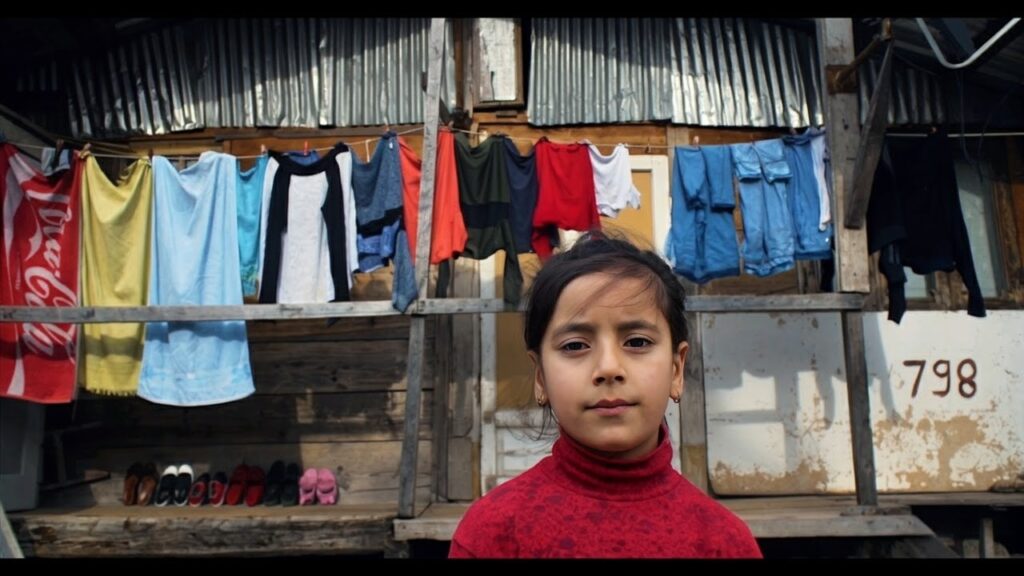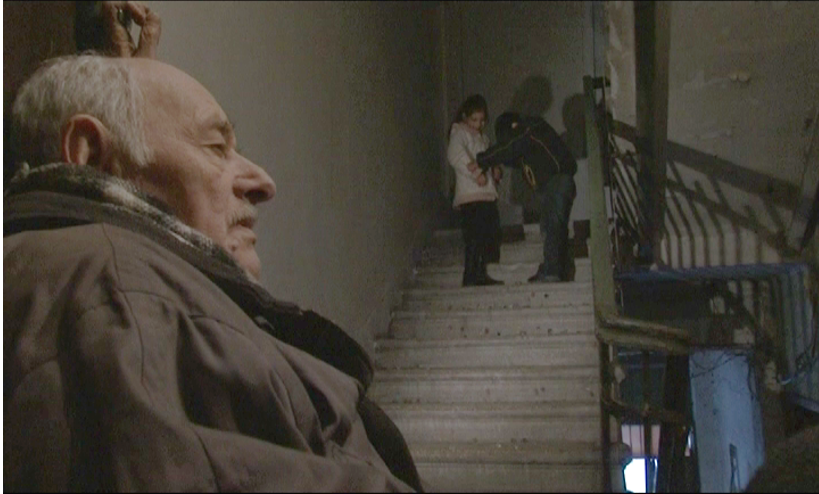Art often turns into the voice that society does not or cannot listen to. There are topics that are often difficult and painful to talk about. Poverty is just such a topic. It is not only an economic concept but a deeply human tragedy that can cast a person into the shadows, take away their image and turn them into mere statistical data.
It is such harsh reality that Natia Sharmiashvili’s student film “Silence” (2021) portrays, which tells the story of marginalized people not with words but with the language of portrayals, images and silence. The title of the film in itself, is already expressive. This is a silence that does not represent a simple sound vacuum. This is a silence that screams. It is an expression of the wordless pain, hopelessness and invisibility in which so many people live. No dialogue is heard in the film but this does not mean that the story is silent. Conversely, each shot, each look, wrinkled face or empty streets become a monologue in itself. It is a silence that forces the viewer to grasp what cannot be expressed in words.
The central line of the film is a series of the people’s portraits who live in a poor settlement. The director seems to carefully, intimately capture in the shot those faces that may go unnoticed in everyday life. We can see children’s eyes, in which some childish light and a spark of hope still lives despite poverty, although adults stand next to them, on whose faces there are imprinted traces of burden, fatigue and weakness. These portraits are not simple documentary footage; they are works of art that establish a deep emotional connection with the viewer.
The most powerful and metaphorical artistic device used in the film is the portraits against the background of house numbers and addresses. This detail is not accidental. It is a powerful symbol that exposes society's attitude towards marginalized groups. In the eyes of society, these people often lack individuality. They are not perceived as individuals with their own lifestyle, dreams and pain. They are just statistical units, digits, numbers. The house number, which appears next to the human face in the frame, seems to fix this unfair hierarchy. It emphasizes the fact that public consciousness reduces their identity to mere data.
“Silence” is a more poetic work than a classic narrative film in its structure, rhythm, and emotional charge. It does not have a traditional plot with a beginning, middle, and end. It is more like a visual poem, consisting of portraits, symbols, and moods. The camera is not a simple observer, it is a lyrical hero who gently and sensitively touches this harsh reality. Composition, close-ups of faces, shots of empty streets - all these elements come together to create emotional poetry.
The director skillfully uses visual language and conveys what words cannot do. Shots where people appear, though with sadness in their eyes, create a deep conflict that goes beyond the scope of simple visual information. In these shots lies a story of childhood loss, of hope and despair, a difficult balance. This is a film that affects the senses, not the mind. It makes us feel, not just see.
The film tells a story through silence and images, but its finale gives this wordless narrative a special intensity. The last shot is the ultimate climax, where the camera follows a long, muddy road from the poor settlement, through huts of tin and unpolished concrete blocks. The road, which begins in the background of people’s portraits, leads not to a lighted, shining city, but to an old, antique-style building, with columns and capitals, which, in turn, is half-ruined and only the facade remains. It is in this section that one of the film’s most poignant and multi-layered metaphors is created. The director tells us that the historical grandeur, cultural heritage and beauty that were once the spiritual foundation of society have now become useless ruins, just like this building. It exists as an immobile and beautiful skeleton, but devoid of life. At the same time, life, existence and function have been transferred to a place where beauty and grandeur do not exist, to a slum, where people still live behind numbers and digits. The finale of the film is not just an ending, it is a final, powerful commentary on the state of society. The director, seems to show us that our society is divided: on one side there is a revived but sad reality (a poor settlement), and on the other side there is a beautiful but dead past (a ruined ancient building).
The film represents a powerful criticism of social inequality. The author tells us that in the eyes of society, these people are often not individuals, but simply numbers, data that do not deserve individual attention. It is a call to see the person behind the number and to realize that inequality destroys human dignity. “Silence” helps us awaken empathy. When we watch the hard life depicted on the screen, we connect with the characters, feel their pain and disappointment. This empathy is the first step towards overcoming prejudice and developing a more humane attitude towards the most vulnerable members of society. It encourages us to see ourselves, our children, our parents in them, which destroys the walls between “us” and “them.”
Natia Sharmiashvili’s film reminds us that each person, regardless of their social status, is a unique individual. It encourages us to see not only the problem, but also the human tragedy that lies behind this problem. This short film has a power that even full-length films often lack. It manages to convey such a deep emotional and intellectual load in a short time that silence is no longer the same after watching it.
Salome Gogoli






